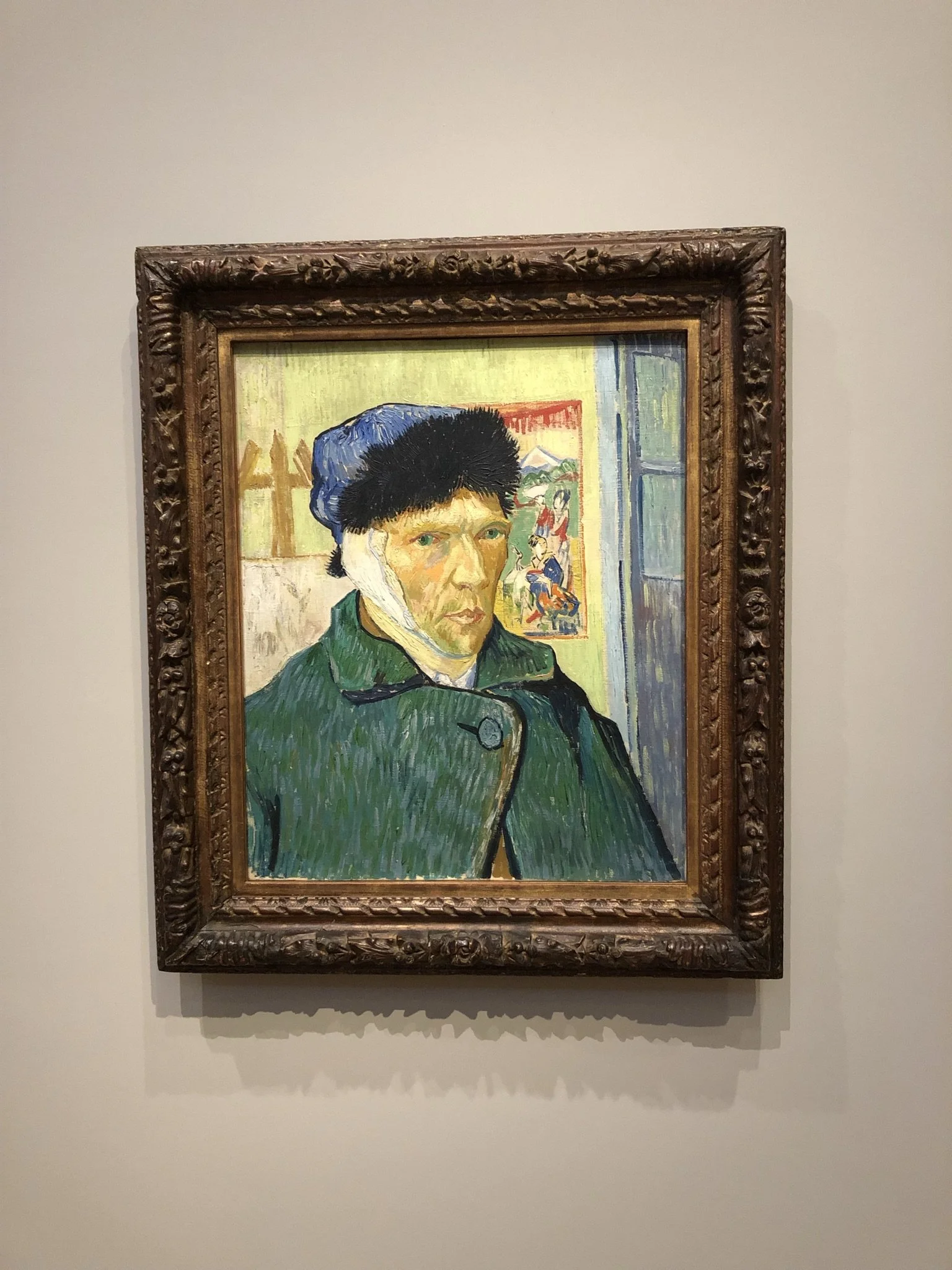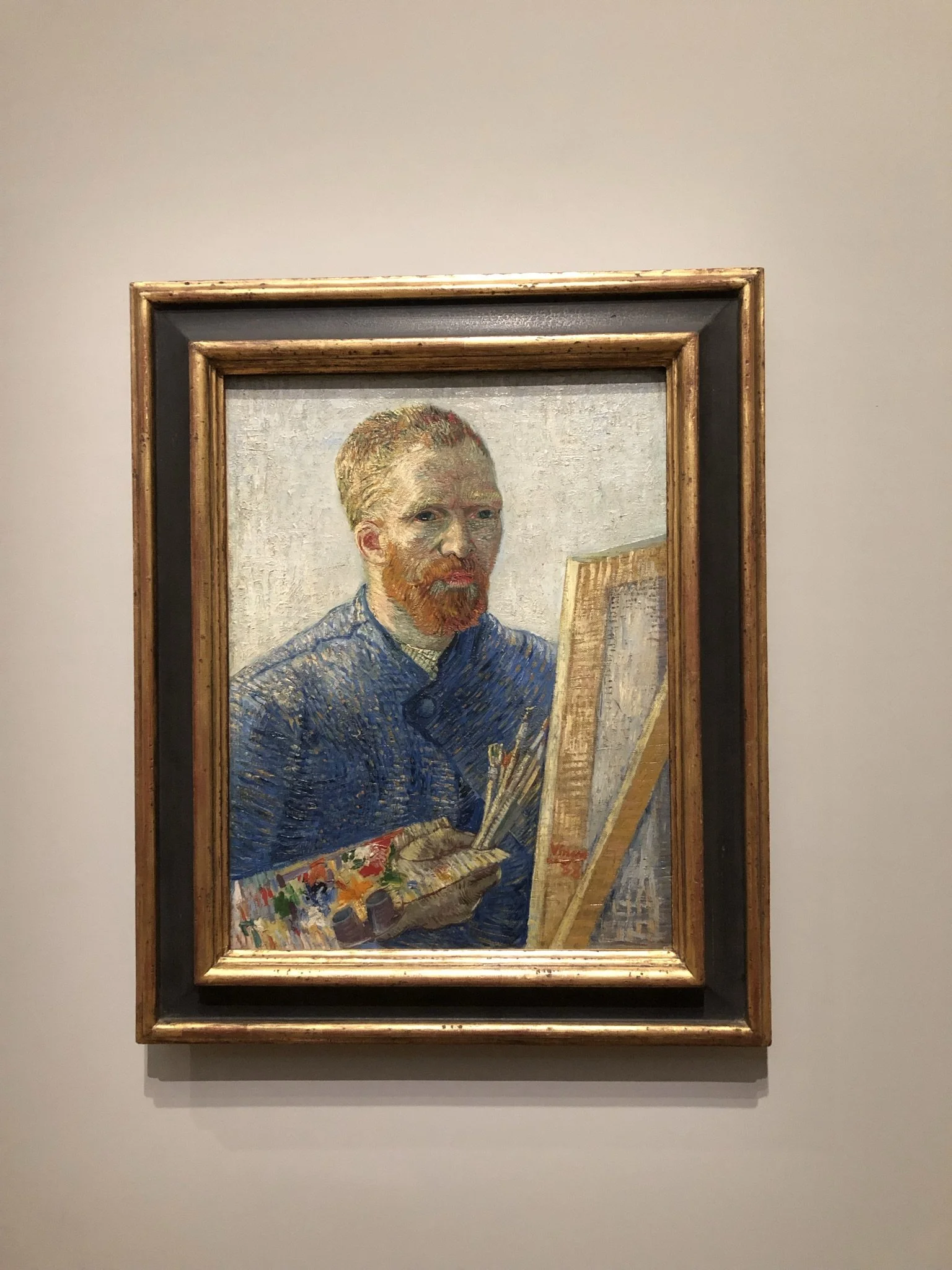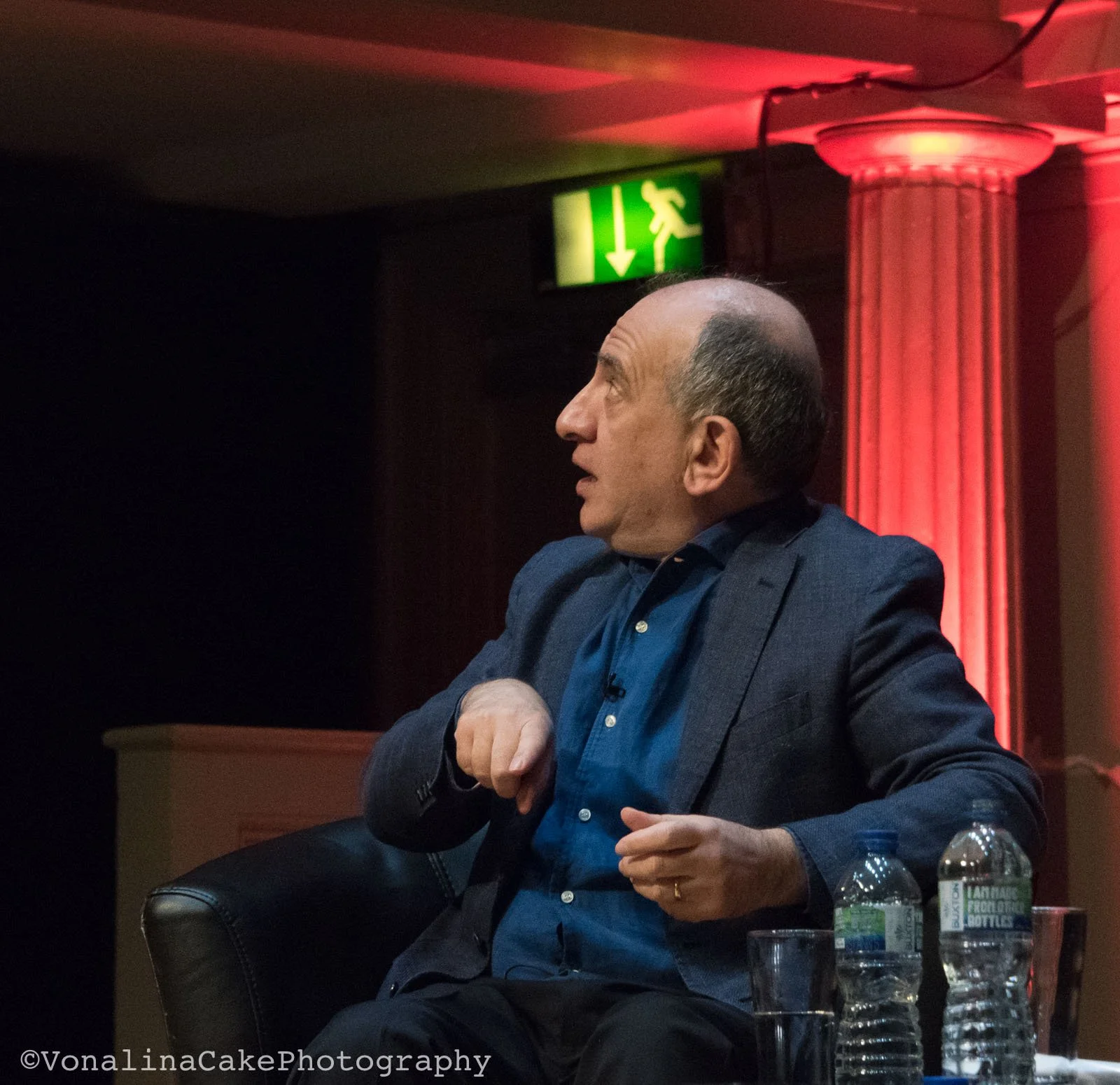February Arts Review Roundup
It’s February’s arts review roundup - read on for culture editor Kerry and long-term mag writer Von’s take on Armando Iannucci and Robin Ince in conversation, and a new take on an old master - Van Gogh. Self Portraits at London’s Courtald Gallery.
Van Gogh. Self-Portraits
Words by Jonathan Buchanan
There are artists whose works are so renowned that it is difficult to fully appreciate them. Vincent Van Gogh is one such artist. By the time I first saw Sunflowers on a school trip to the National Gallery, I had seen the image so many times on whiteboard screens and greeting cards that my response to the thing itself was a juvenile ambivalence. When an artist’s work becomes so widespread and familiar, the aura of the art is easily lost to the cultural cachet. The task of a gallery, therefore, is to find a way of maintaining that enigmatic aura and encouraging visitors to regard the art from a different perspective.
Van Gogh. Self-Portraits, at the Courtauld Gallery in London, sets out to do just this. Displaying sixteen self-portraits across two rooms, the exhibition offers an insight into how Van Gogh approached self-portraiture, illuminating both his ongoing thirst for stylistic experimentation and his fascination with the presentation of the self. The portraits span only a few years: the earliest dates from 1886, and the latest from autumn 1889. Yet, within this brief window, there is huge variety. The portraits fluctuate from a mellow pointillism to an unnatural vibrancy, from accuracy to abstraction.
The exhibition emphasises this stylistic variety and avoids focusing too heavily on the artist’s life. The folklore of Van Gogh’s biography – the story of the unappreciated, penniless painter driven to self-harm and suicide – is acknowledged throughout the exhibition but does not dominate. By resisting the temptation to view the paintings solely through the lens of the artist’s biography, the Courtauld allows the art to speak for itself. Rather than appearing simply as unrestrained expressions of emotion, the portraits instead show the range and relentless experimentation of a masterful artist. The exhibition highlights that, even at the lowest points of his mental health, Van Gogh was firmly and acutely in control of his brush.
By focusing only on self-portraits, the exhibition provides a thorough examination of Van Gogh’s relationship with the form. While the scope may seem narrow, it allows visitors to properly study these paintings and understand the artist’s relationship with self-portraiture. Throughout the exhibition, we see Van Gogh cast himself in a range of guises – he is by turns urbane gentleman, straw-hat-wearing provincial, and harrowed invalid. Physical appearance is not a fixed constant, but a mutable concept. This is most clearly demonstrated by two portraits painted a week apart during Van Gogh’s time at the Saint-Paul-de-Mausole asylum in Saint-Rémy. In one, he is gaunt, timid, and receding into the background. In the other, he is determined, resolute, with palette in hand. The Courtauld reunites these paintings for the first time and, by placing them together, highlights the vast differences in Van Gogh’s various presentations of himself.
Van Gogh. Self-Portraits runs until early May. It is a terrific exhibition that offers an intimate insight into the work of a great artist. It resists the conventional presentation of Van Gogh and instead encourages visitors to take a closer look and observe the mastery of the art. General admission to the Courtauld is included in the exhibition ticket, allowing visitors to explore the Great Room and its extensive collection of Impressionist and Post-Impressionist art.
Bristol Slapstick Festival Presents Armando Ianucci - A Life In Satire
Words by Vonalina Cake and Kerry Mead, images by Vonalina Cake.
Armando Iannuci and Robin Ince at the Slapstick Festival. © Vonalina Cake Photography, 2022.
On Sunday 30th January as part of 2022’s Slapstick Festival, to a packed hall at St Georges Bristol, Armando Iannucci shared his thoughts with fellow comedy writer Robin Ince on how satire entertains, informs, shapes opinions and adapts to the times.
Some of you might not know Iannuci’s name but you certainly would have come across some of his TV and film work over the years. Alan Partridge, Veep, The Thick Of It, Brass Eye, The Death of Stalin and more recently the wonderfully imaginative The Personal History Of David Copperfield. He’s had his inky hands and sharp brain across a lot of amazing works, much of it political satire, and some of it achingly close to reality. The Day Today, a spoof news programme, sailed very close to being believable, Iannuci took pains to make sure every minute of The Death Of Stalin was historically accurate. When the truth is so strange there's no need to add too much to the mix. The more true it is to reality the more funny it is, life is absurd like that, and Ianucci is excellent at presenting the natural absurdity of life.
Ianucci is brilliant and that's a fact; he's witty, warm and sharp as a tack. His ability to keep all the threads together and create some of the most fast paced and clever dialogue is a cut above, and he proves his sharpness and wit on stage today. When he talks about the swearing allowance The BBC gives them per episode for The Thick Of It he relays it with relish. He gently tested us with what we might be okay with, figuring, I suppose, if we're already there then we're definitely expecting some effing and c-ing, but every single swear word is perfect.
Robin Ince and Ianucci dive straight into the talk with questions about the state of the current government and if it’s really worth trying to satirise their, quite frankly, bizarre and comedic actions, especially those of Boris Johnson, who Ince calls a ‘first draft P G Wodehouse character’. Ianucci says that “Boris Johnson is a self-basting satirist.” One of the ideas he furnishes us with which really sticks in the mind is that the journalists are now the comedians, as the politicians have become entertainers. The audience responds with heavy laughter and this sets the scene for the next hour and a half in their company.
You can clearly see why Ianucci’s TV and film canon is such a brilliant one; an hour and half has never gone so quickly, or been so full of fascinating insights on the state of the modern world and belly-laughs. He wryly dissects often absurd and sometimes petty inner workings of The Houses of Parliament and The White House, both of which he has had a great deal of access to in the name of research over the years. His personal anecdotes are a joy; such as organising an interview with Alan Partridge for Tony Balir, and about his first meeting with Chris Morris; circling the BBC Buildings in a clapped out old banger for hours because they couldn’t find anywhere to park, dreaming up a comedy sketch show which would become Brass Eye.
We see clips from some of the highlights of British satire from the last fifty or so years, some of which he has had a hand in creating. Ianucci and Ince dissect the clips and use them as springboards to explore the importance of truth in comedy; the way satire affords different ways to present the truth and the ways you can really explore the absurdity of a situation with comedy that you can’t really do with serious writing so much. But he also tells us how some things cannot be played for laughs so you just leave the truth untouched, bare and awful as it is.
In a blink of an eye it’s time for questions from the audience; he finishes with a question asking him what is next in a world where satire creates itself. He tells us that he is busy researching the power of social media, how he finds its hegemony more disquieting than an individual's abuse of power due to it not having a human face or name. If his past work is anything to go by; he’s going to tear up social media and leave its guts bare, and we can’t wait.
Do you want to write a review? Get in touch here.











